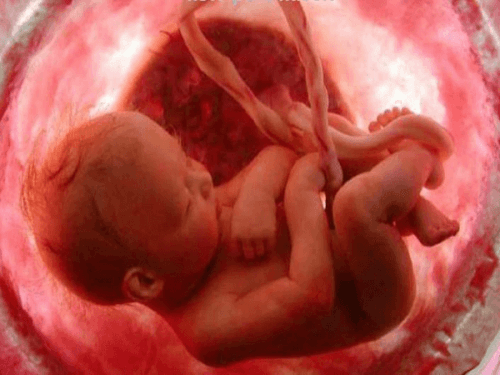The Position of the Fetus May Affect Your Delivery

Whether your baby will be born through a natural birth or cesarean delivery will depend, to a large extent, on its position in the uterus. Continue reading to find out more about the position of the fetus in the womb, and what it could mean.
The position of the fetus may indicate how your delivery will occur. It may influence whether your baby will be born through the vaginal canal or if you’ll have to resort to a cesarean section.
85% of babies are positioned head down in the uterus in the so-called cephalic position. The cephalic position occurs frequently and it facilitates vaginal delivery.
Keep in mind that all cases are different. Sometimes the baby never reaches the cephalic position. That’s why we’ve decided to share with you all the details about the different position so you can know a little more about how your delivery will be.
The position of the fetus indicates how your delivery will be
It’s very important for the baby to be positioned correctly in the pelvis in order to facilitate birth through the vaginal canal.
Cephalic position can even make the cesarean easier. During the seventh month of pregnancy, the fetus begins to adopt the cephalic position. In the cephalic position their head comes closer to the mother’s pelvis.
This action happens automatically. According to statistics, the baby can change positions in the eighth month when it comes to first-time mothers. Sometimes it can even occur a few weeks before childbirth.
There are other positions, however, that your baby can adopt that can complicate your labor. Here are a few examples of different positions:

Anterior cephalic position
In this position, the baby puts their nape in front of the pelvis. This position facilitates birth, and it can make labor occur easily.
Posterior cephalic position
This is also an acceptable position. However, if the baby comes down with the nape of its neck towards the mother’s spine, this could lead to the mother feeling back aches and fatigue during labor.
When children are in the cephalic position, the chances are high that the mother will have a natural delivery. In some cases, if the child is unable to properly position itself in the posterior cephalic position, forceps may have to be used.
Positions that require a cesarean section
There are positions that complicate natural delivery calling for the need of a cesarean section. Here are some examples:
Face position
This occurs when a mother has some sort of issue in her uterus. This causes the child to show their face or forehead. Therefore, the child’s diameter increases, making it harder for the mother to dilate.
Transverse position
Around 0.2% of pregnant women have their babies found in this position. As the name indicates, the baby is lying horizontally above the birth canal.
Obviously, if the baby is found in this position it makes it impossible for the mother to have vaginal delivery.
“During the seventh month of pregnancy, the fetus begins to adopt the cephalic position. In the cephalic position their head comes closer to the mother’s pelvis.”
Podalic position
The position is also known as the breech position. The fetus may adopt this position when the umbilical cord is short.
It can also occur when there are malformations or when the placenta is above the cervix.
In this position, the child appears to be sitting with their buttocks. At the time of their birth, they may come out feet first.
In a small number of cases, mothers have been able to give birth to their children naturally even when their babies are in the podalic position.
This usually occurs in the second or third birth, since the mother’s pelvis is a little larger.

How can the baby’s position change?
Yes, the baby’s position can change in order to facilitate natural birth. In the past, midwives performed gentle massages to relocate the child.
Your obstetrician may perform a similar action during childbirth. Children who are in a transverse position can adopt the cephalic position easily.
As a complement, you can consider the following actions: swimming, practicing yoga for at least 20–30 minutes a day or sitting on a large beach ball and leaning forward.
These are all ways to help your baby adopt the right position to enter the world.
This text is provided for informational purposes only and does not replace consultation with a professional. If in doubt, consult your specialist.








